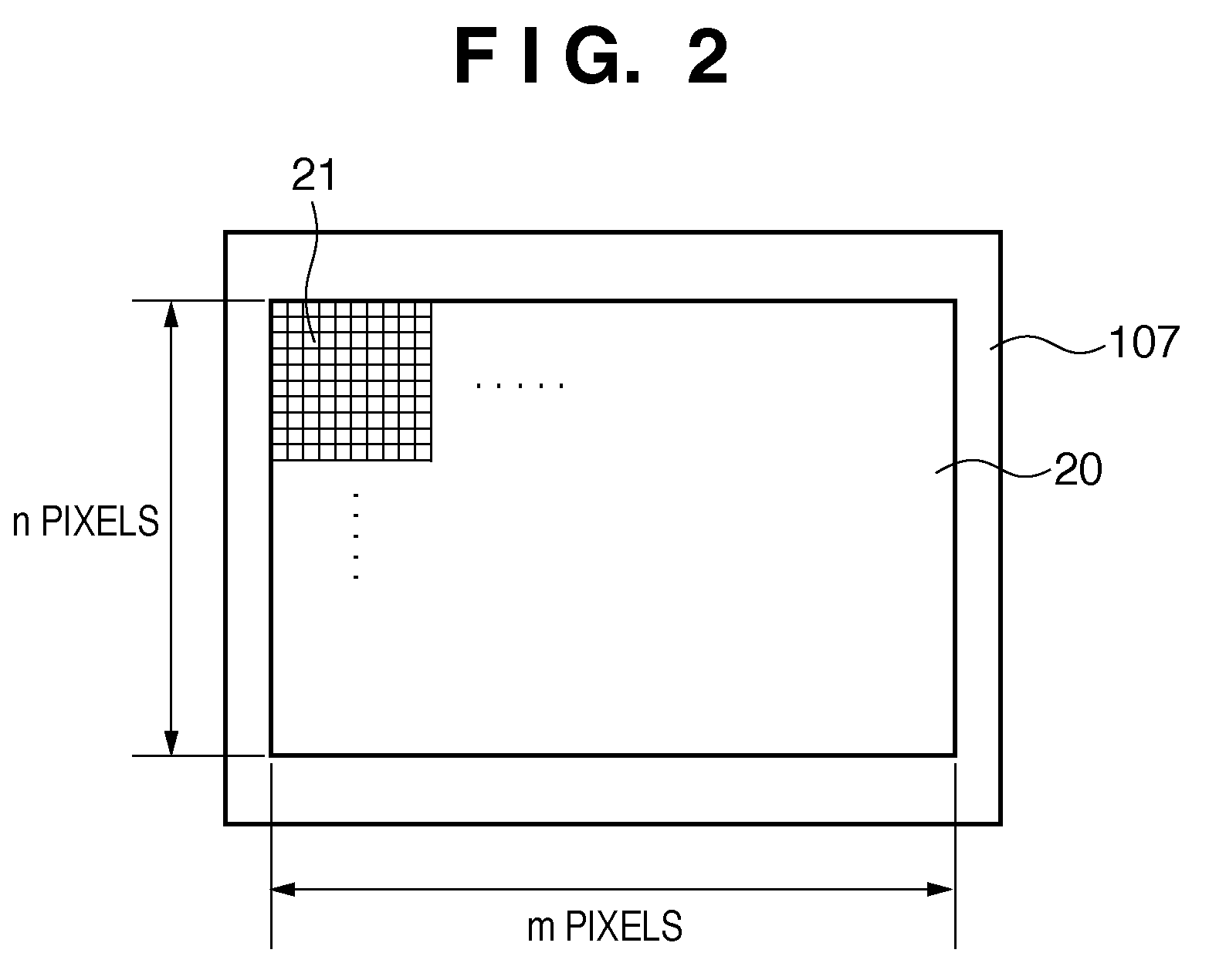Image sensing apparatus, image sensing system and focus detection method
a technology of image sensing and image sensing, which is applied in the direction of camera focusing arrangement, printers, instruments, etc., can solve the problems of not being able to improve accuracy, not being able to set a wide focus detection region, and not being able to adjust the speed of high-speed focus adjustment operations
- Summary
- Abstract
- Description
- Claims
- Application Information
AI Technical Summary
Benefits of technology
Problems solved by technology
Method used
Image
Examples
embodiment 1
[0045]FIG. 1 is a block diagram showing a configuration of a camera according to Embodiment 1 of the present invention, and shows, as an example, a digital still camera in which a camera body, including an image sensor, and a photographing lens 100 are integrated.
[0046]In FIG. 1, L indicates the optical axis of the photographing lens 100. Reference numeral 101 denotes a first lens group disposed at the front end of the photographing lens 100, and is held so as to be capable of moving back and forth in the optical axis direction. 102 denotes a diaphragm shutter that adjusts the amount of light when photographing by adjusting its aperture diameter and has a function of adjusting an exposure time when photographing a still image. 103 denotes a second lens group. The diaphragm shutter 102 and the second lens group 103 integrally move back and forth in the optical axis direction, and realize a magnification function (zoom function) in conjunction with the back and forth movement of the f...
embodiment 2
[0109]Embodiment 2 of the present invention will be described next.
[0110]Embodiment 2 differs from Embodiment 1 in that Embodiment 2 can cope with the case in which, in the photographing lens 100, the pupil distance changes significantly depending on the zoom or focus position.
[0111]FIG. 20 is a diagram for illustrating such a case, and shows focus detection pixels that correspond to the focus detection pixels of Embodiment 1 shown in FIG. 11. In FIG. 20, EP1 indicates an exit pupil when the zoom position of the photographing lens 100 is at a telephoto end, and EP2 indicates the exit pupil when the zoom position of the photographing lens 100 is at a wide-angle end. The exit pupil changes in a range indicated by dotted lines in FIG. 20 between the telephoto end and the wide-angle end.
[0112]As described above, in Embodiment 2, not only the diameter of the exit pupil changes according to the zoom position of the photographing lens 100, but also the distance from the microlens to the ex...
embodiment 3
[0118]Embodiment 3 of the present invention will be described next.
[0119]Embodiment 3 shows an example in which the focus detection unit of Embodiment 1 is applied to a camera system.
[0120]FIG. 22 is a block diagram showing a configuration of a camera system according to Embodiment 3. The components indicated by the same reference numerals as those of Embodiment 1 have the same functions, so descriptions thereof are omitted here. In FIG. 22, 220 denotes a camera body, 221 denotes an interchangeable lens detachable from the camera body 220, and they are joined so as to be capable of information communication via I / F units 222 and 223. The interchangeable lens 221 includes a CPU 224 that performs various computation processes, and that is connected to a driving circuit 225 that drives the zoom, focus, diaphragm shutter and the like of the photographing lens 100. The driving circuit 225 is connected to an actuator 226. Furthermore, as in the camera body 220, a flash memory 227 into whi...
PUM
 Login to View More
Login to View More Abstract
Description
Claims
Application Information
 Login to View More
Login to View More - R&D
- Intellectual Property
- Life Sciences
- Materials
- Tech Scout
- Unparalleled Data Quality
- Higher Quality Content
- 60% Fewer Hallucinations
Browse by: Latest US Patents, China's latest patents, Technical Efficacy Thesaurus, Application Domain, Technology Topic, Popular Technical Reports.
© 2025 PatSnap. All rights reserved.Legal|Privacy policy|Modern Slavery Act Transparency Statement|Sitemap|About US| Contact US: help@patsnap.com



